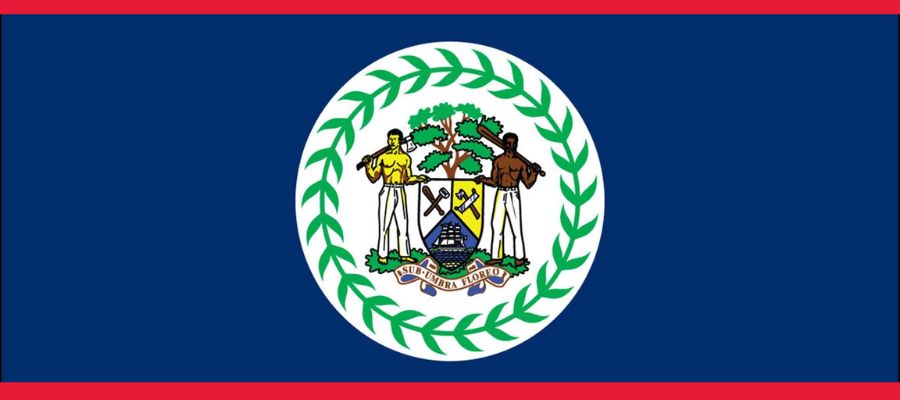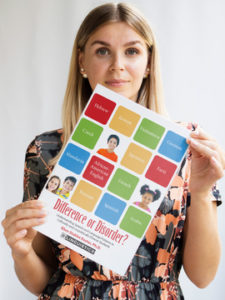I love learning the ins and outs of different languages and thinking about how the structure and makeup of languages impacts the bilingual language assessment process. In this essay. let’s talk about Belize speech and language patterns for the different languages of Belize.
A Variation of English is the Lingua Franca
As I read about the languages and cultures of Belize, I realized that Belize and Singapore, a country I spent a few years in as a teenager, have some big things in common. The most important of those (from a speech-language pathologist’s perspective) is that English is the “official” or “main” language BUT it is not the native or home language of most of its citizens. In both Singapore and Belize, an English-based creole or dialect is the lingua franca, or bridge language, that is used so the diverse citizens of the area can communicate. Singapore and Belize were also both British colonies, which explains why English is the trade language and the language used in schools in these countries.
What does such circumstantial bilingualism mean for bilingual language evaluations?
Let’s think about what this means for bilingual language evaluations. English is the primary language used in academic settings in Belize but for most, it is not the primary language used at home. Thus, children use one language (or two languages) at home and another at school. And the result of this type of circumstantial bilingualism is that the languages can influence each other. We might see patterns of the home language used in the school language and vice versa. And that’s what normal bilingualism looks like. Our job is to understand what that looks like so we can make accurate diagnostic decisions.
Let’s Start with Some Facts about Belize
Here are some of the cool things about this beautiful country. Belize is a country about the size of Vermont. It’s located south of Mexico and east of Guatemala, and shares a border with both countries. It’s also in close proximity to Honduras, and thus surrounded by multiple Spanish-speaking countries. Belize’s population is less than 400,000 people.
The Languages of Belize
English is the official language of Belize but many Belizeans are multilingual. Most of the population speaks a creole patois, Belizean Creole, that is also referred to as Kriol. It’s common for Belizeans to easily flow from speaking English to Spanish to Kriol. In fact, more than 40% of the population of Belize speak all three of these languages.
There are also many other languages spoken in Belize. Take a look at this graph I created using data from Wikipedia.

You can see that, in addition to the three languages we talked about above (English, Spanish and Belizean Creole), there are also a number of other languages spoken including some Mayan languages, German, and Garifuna.
Mayan Languages Spoken in Belize
The Maya have lived on the land now called Belize for thousands of years. Mayan languages, including Yucatec, Mopán, and Kekchí (Q’eqchi’), are actively spoken in villages in southern Belize.
German
German is also spoken in Mennonite colonies and villages in the northern part of Belize. Mannonites fled Europe in search of a place to practice their religion. There are currently about 7,000 Mennonites in Belize who speak an archaic form of German.

Garifuna
Garifuna is spoken by the Garifuna people who once lived in the Antillean islands of St. Vincent and Dominica but they were deported by the British in the late 1700s to the north coast of Honduras. The Garifuna people now live in Honduras, Nicaragua, Guatemala, and Belize. Their language was declared by UNESCO a Masterpiece of the Oral and Intangible Heritage of Humanity in 2008. An interesting element of the Garifuna languages is the split between what is referred to as “men’s speech” and “women’s speech.” Many concepts have two words that are used to express them, one that men use (mostly loanwords from Carib) and one that women use (from Arawak).
We’ve covered English, Spanish, and German in the Difference or Disorder book already so I won’t talk about those here but I will share some details about Belizean Kriol, including the sounds of the language, the phonotactic constraints, and the structures to support those conducting evaluations for students who speak Belizean Kriol as their native language.

Belizean Creole, Kriol
Some have described Belizean Creole/Kriol as accented English or slang-English but that is not accurate. It is an English-based creole language. It is the native language spoken by many Belizeans (some Garifunas, Mesizos, Maya, and others) and it is the second language for most others in Belize.
Belizean Kriol Speech and Language Development
Belizean Kriol/Creole Consonant Phonemes in Comparison to English
| Belizean Kriol Consonants Not Shared with English | /ʀ/ |
| Belizean Kriol Consonants Shared With English | /p/ /b/ /t/ /d//k/ /g/ /f/ /v/ /s/ /z/ /ʃ/ /ʒ/ /tʃ/ /dʒ//h//m//n/ /ŋ/ /j/ /l / /w/ |
| English Consonants Not Shared with Belizean Kriol | /ð/ /θ/ /ɹ/ |
There is one phoneme that exists in Belizean Kriol that does not exist in English, and that is the trilled [r]. There are three sounds that exist in English but do not exist in Belizean Kriol, and those are the voiced “th” [ð], the unvoiced “th” [θ], and the retroflex “r” [ɹ]. All other consonants exist in both languages. Though velars exist in both languages, they are used a lot more in English than in Belizean Kriol.
Belizean Kriol/Creole Vowel Phonemes in Comparison to English
| Belizean Kriol Vowels Not Shared with English | /aː/ /iː/ /oː/ /uː/ |
| Belizean Kriol Vowels Shared With English | /a/ /e/ /i/ /o/ /u/ |
| English Vowels Not Shared with Belizean Kriol | /ð/ /θ/ /ɹ/ |
Vowels in common between Belizean Kriol and English include [a, e, i, o, u]. Belizean Kriol uses vowel length phonemically so [a:, i:, o:, u:] are vowel phonemes that exist in Belizean Kriol but not in English. In English, there are a number of vowels that are not used in Belizean Kriol, including [ɚ, ɔ, ɛ, ʌ, ʊ, ɪ, æ, ə].
Phonotactic Constraints of Belizean Kriol
- As with many creole languages, Belizean Kriol has many open syllables so many words end in vowels.
- Consonant sounds that follow unstressed vowels at the ends of words are not pronounced, which also results in words ending in vowels even when there is a consonant in the orthographic representation of the words.
- Some Kriol speakers palatize the velar sounds [k] and [g].
- Consonant clusters are commonly reduced to a single consonant in final position and are sometimes reduced to a single consonant in word initial and word medial positions.
- Unstressed initial vowels are often not pronounced.
- Stress is evenly distributed across syllables.

Language Features of Belizean Kriol
- The present tense of verbs is not marked overtly.
- “di” is used to mark past progressive tense and present progressive tense.
- Plurals are marked with “de” “dem” or “den” following a noun. Occasionally “s” is added to words to mark plurals.
- Syntax is similar to English in which Subject-Verb-Object (SVO) is the most common sentence structure. SVO is also used in interrogatives, unlike in English.
- The use of a proper noun plus a pronoun is common (Ms. Ellie, she…)
- Comparatives are marked with “a” at the end of the word (e.g. big, biga).
- Superlatives are marked with “es” at the end of the word (e.g. big, biges).
- Adjective forms are often used to express adverbs as well (e.g. “quick” instead of “quickly”).



